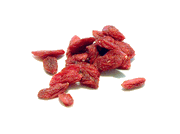Satibo Ingredients
![]() Satibo has already taken Japan , China and the Middle East by storm. The ingredients include Chinese yam, Chinese wolfberry fruit, Iiquorice root, Job's tears, gorgon fruit and lily, and are said to regulate 'the immunity of body fluid' and to 'fight fatigue'.
Satibo has already taken Japan , China and the Middle East by storm. The ingredients include Chinese yam, Chinese wolfberry fruit, Iiquorice root, Job's tears, gorgon fruit and lily, and are said to regulate 'the immunity of body fluid' and to 'fight fatigue'.
 |
Chinese Wolfberry (Lycium barbarum L.) |
|
|
Job's Tears (Coix lacryma-jobi) |
|
|
Liquorice Root (Glycyrrhiza) Liquorice can be used to treat a number of ailments including sore throats, heartburn, arthritis, and constipation. It's use in Chinese herbal medicine is well established. |
 |
Gorgon Fruit (Euryalacea) Also known as: Euryale, Fox Nut, Qian Shi Gorgon Fruit is used for improving sexual ability and energy levels in the elderly as well helping to slow the aging process. It can also be used to treat premature ejaculation, nocturnal emissions, arthritis pain and frequent urination. |
 |
Lily (Lilium candidum L.) It's the bulb of the Lily flower that is known for its medicinal properties. It has been used as a topical treatment for burns, pimples, or generic "female complaints." Chinese herbalists aslo use it for treatment of coughs and insomnia. |
 |
Chinese Yam (Dioscorea opposita) Chinese Yam is traditionally used to promote the function of the spleen and/or stomach. It can also be used in the creation and proper function of body fluids and treating coughs. |